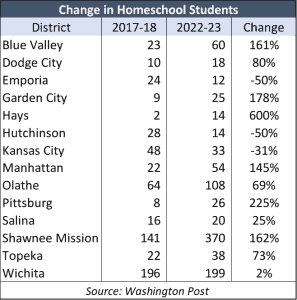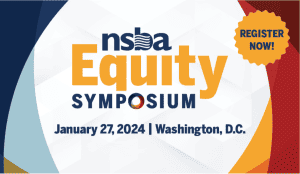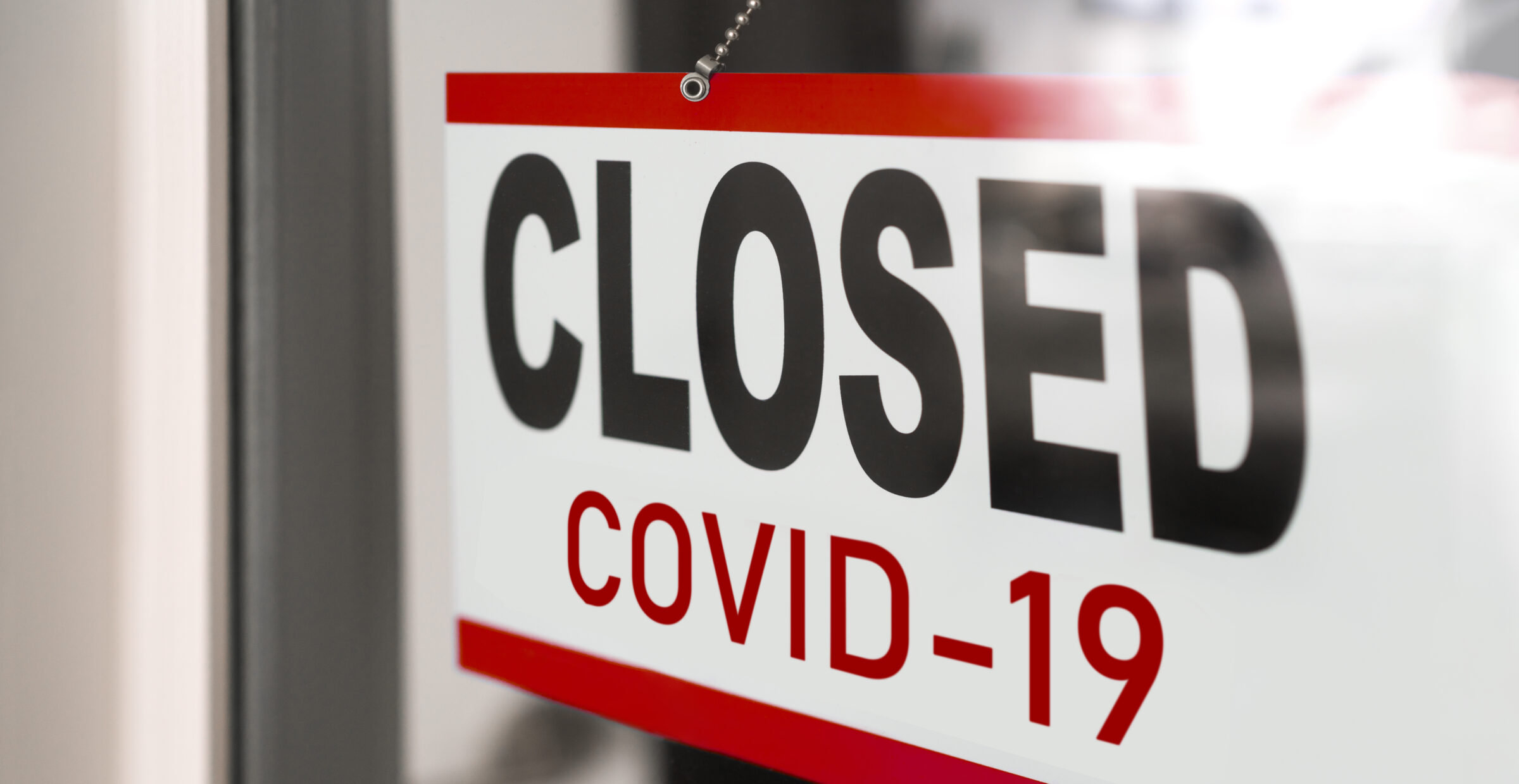Calling it “the most detailed look to date at an unprecedented period of growth in American homeschooling,” the Washington Post has analyzed data from some 7,000 school districts nationwide to chart what the paper refers to as “America’s fastest-growing form of education.”
From data collected from 32 states, including Kansas and The District of Columbia, representing 60% of the school-age students in the United States, The Post estimates there are now between 1.9 and 2.7 million students being home-schooled. By contrast, the National Center for Economic Statistics reported in pre-pandemic 2019 that 1.5 million students were in home schools.
From its analysis, the paper reveals:
- In states with comparable enrollment figures, the number of home-schooled students increased 51% over the past six school years, far outpacing the 7% growth in private school enrollment. Public school enrollment dropped 4% in those states over the same period, a decline partly attributable to homeschooling.

- Homeschooling’s surging popularity crosses every measurable line of politics, geography, and demographics. The number of home-schooled kids has increased 373 percent over the past six years in the small city of Anderson, S.C.; it also increased 358 percent in a school district in the Bronx.
- In 390 districts included in the Post’s analysis, there was at least one home-schooled child for every 10 in public schools during the 2021-2022 academic year, the most recent for which district-level federal enrollment data are available. That’s roughly quadruple the number of districts that had rates that high in 2017-2018, signifying a sea change in how many communities educate their children and an urgent challenge for a public education system that faced dwindling enrollment even before the pandemic.
- Despite claims that the home-schooling boom is a result of failing public schools, the Post found no correlation between school district quality, as measured by standardized test scores, and home-schooling growth. In fact, high-scoring districts had some of the biggest spikes in home schooling early in the pandemic, though by the fall of 2022, increases were similar regardless of school performance.
 Kansas K-12 enrollment is down about 11,700 students since the 2018 school year. That is a 2.5% decline, compared to a 57% increase in homeschooling, according to the Post’s research:
Kansas K-12 enrollment is down about 11,700 students since the 2018 school year. That is a 2.5% decline, compared to a 57% increase in homeschooling, according to the Post’s research:
The Post’s data shows significant homeschooling increases for most of the larger districts in Kansas, although there are declines in Emporia, Hutchinson, and Kansas City.
Homeschooling in Shawnee Mission jumped 162%, going from 141 students to 370 students, while adjacent districts with similar enrollment experienced smaller increases. Blue Valley went from 23 students to 60 students, and Olathe now has 108 homeschooled students compared to 64 previously.
We asked Jeff Gorman, President of Kansas Home Educators, for his comments on the Post’s study:
To what do you attribute the increase in homeschooling numbers in Kansas?
“Homeschooling has a long history of success in our state. When COVID struck, parents were given the opportunity to see exactly what was happening in their child’s education. Once parents began seeing the issues with public schools, they felt there must be a better way. Parents have been aggressively seeking better education choices for their families since 2020 (making) it clear the system is not working. Since 2020 parents have found education choices that fit best for their families. The families that are homeschooling have become very creative, passionate and entrepreneurial to make the best fit for their child. New homeschool parents have found support, resources, groups and opportunities that they never knew existed. They love this new culture of education that they can tailor to their child.”
Do you see the trend increasing?
“Absolutely. We believe families have seen the success of homeschooling, and with current trends in public education and the frustration with various directives, we believe we can expect continued substantial growth in homeschooling moving forward. Families are looking for quality education and excellence, which we find public schools are struggling to obtain.”
Do you see these numbers providing momentum for school choice legislation next year in Topeka?
“Yes, this trend is providing momentum for greater choices in education, thus a push in legislation. Families are reconsidering how their taxes are spent and what impact their taxes are directly providing to their families. Beyond legislation, families are taking control of their children’s education by looking for alternatives that may be very outside the traditional educational box. Micro-schools, hybrids, private schools and homeschools are all experiencing tremendous growth and popularity in our communities as parents look for and explore different paths for their child’s education.”




